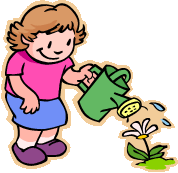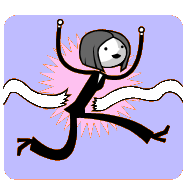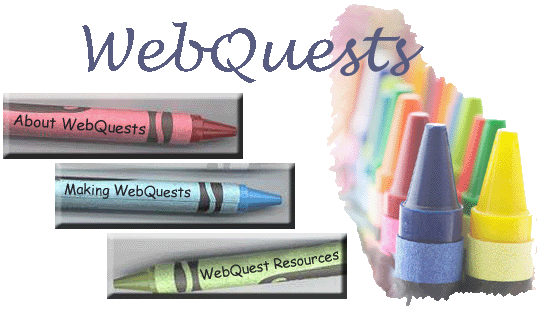|

Making WebQuests is simple, fun, and interesting for the instructor. Follow the seven steps below to produce a WebQuest for your students.
Step One: Determine your Objectives
What is the outcome you would like to see from your students? What do you want them to accomplish? What skills do you want them to put into practice? Consider these questions:
- What do I want my students to learn as a result of this lesson?
- Why is this information important?
- Where does the information fit into the specific context of this unit?
- How does this information fit into the broader curriculum? How can this information help students make connections across subject areas?
 Step Two: Choose your delivery method Step Two: Choose your delivery method
- If you want students to work on the WebQuest in class, will you have enough computers? Should you have students work in teams rather than individually?
- If students are working in a classroom without computers, are you able to provide handouts, magazines, books, realia, or other sources of information?
- If students will be working on WebQuests outside of class, are you sure that each student has access to computers and the necessary skills to use them effectively?
Step Three: Consider the pieces
A well-designed WebQuest will have the following components:
- A "road map." This is the list of web sites or locations which you want your students to visit. This section should include an introduction which explains the purpose of the webquest and the object of the search, hunt, or other "hook" that you've built into your quest. The road map defines the task and lists the steps (process) for accomplishing the task. Design your map carefully! Clarity here will help your students understand the quest and stay on task.
- An evalutation. Depending on the structure of your quest, this sheet could be a scoring mechanism, answer sheet, or checklist for students. Regardless of the precise structure, however, this sheet is used to record the results of the quest. There may be one sheet per student or one per group, depending on how you want students to complete the assignment.
- A summary presentation. Good webquests require students to share what they have learned. Students will turn in the final project to the instructor, and, ideally, students should share their project with their classmates.
Step Four: Research
Look at sample WebQuests online. Research your topic and gather ideas. Collect resources for your students.
Step Five: Design
Create your WebQuest from a template or from scratch. Consider writing up your WebQuest as a Word document (handout), as a PowerPoint presentation, or as a Web site. The choice is yours!
 Be sure that your WebQuest contains the following elements: Be sure that your WebQuest contains the following elements:
- Introduction (sets the stage for the project)
- Task (should be doable and interesting)
- Process (clearly defined steps)
- Resources (information needed to complete the project)
- Evaluation (how the student's work will be graded)
- Conclusion (summary of what the student has learned; encouragement to continue)
Step Six: Implement
Have your students work through the WebQuest and provide them with resources, guidance, and feedback.
Step Seven: Evaluate
How well did your WebQuest work? Did you get the desired outcome?( For example, Did they use the present and past tenses correctly in their letters to the editor? Did they use the correct articles with count and non-count nouns when preparing their shopping lists? Was their letter of complaint properly formatted and did it contain the required elements?)
How did you students respond? Were they motivated to ask questions and find answers? Were they engaged in the activities? Was the team work successful? Were they proud of their results? Did they enjoy the lesson?
How can you improve your WebQuest for next time? What other ideas do you have that would work well as a WebQuest?
Additional Resources
|

